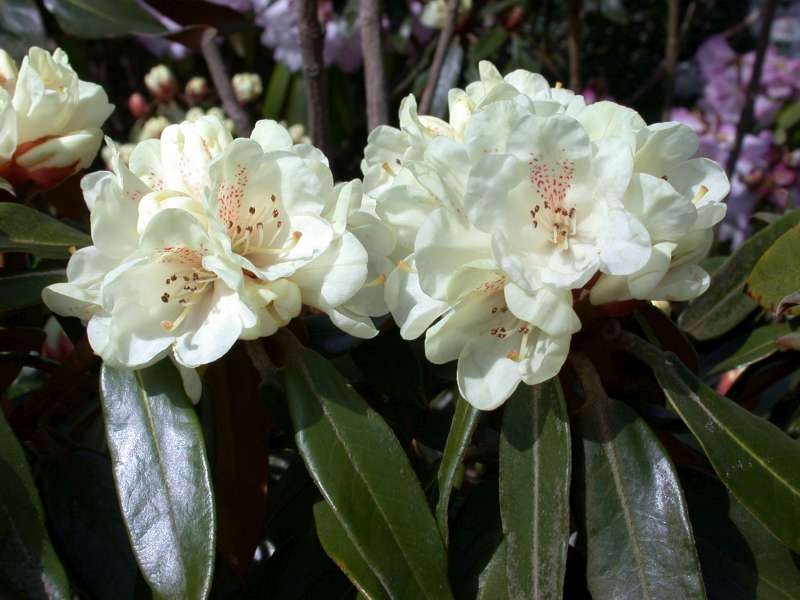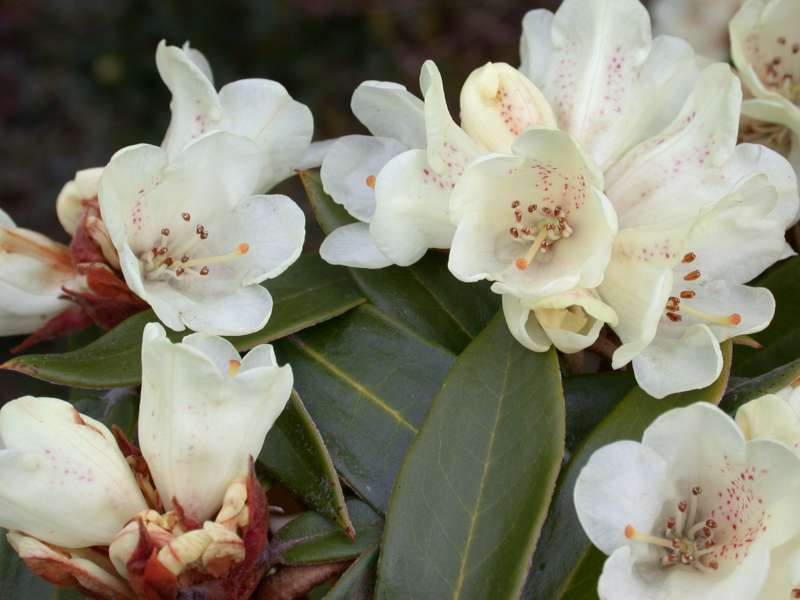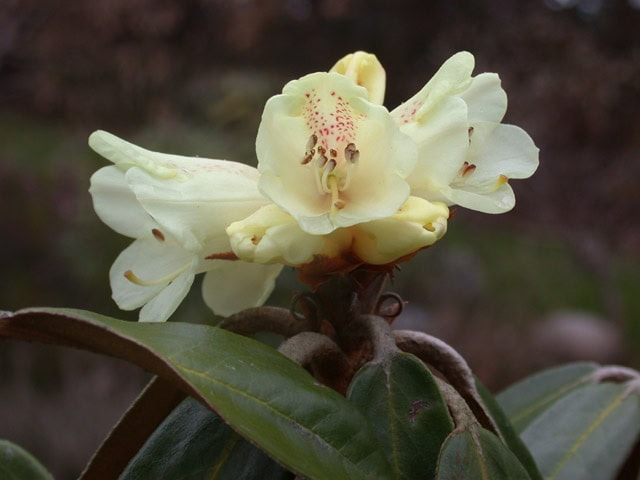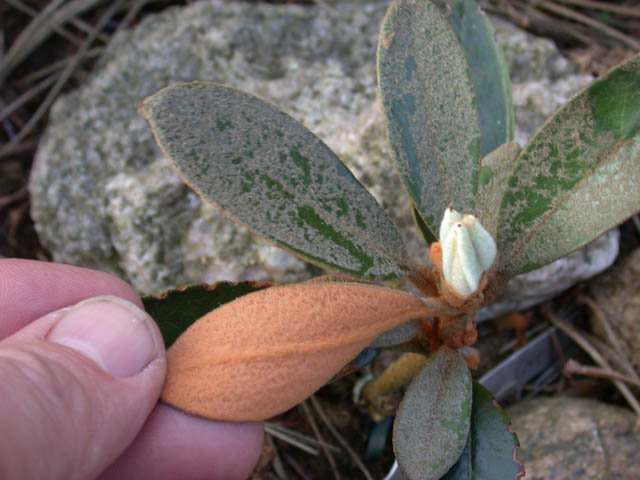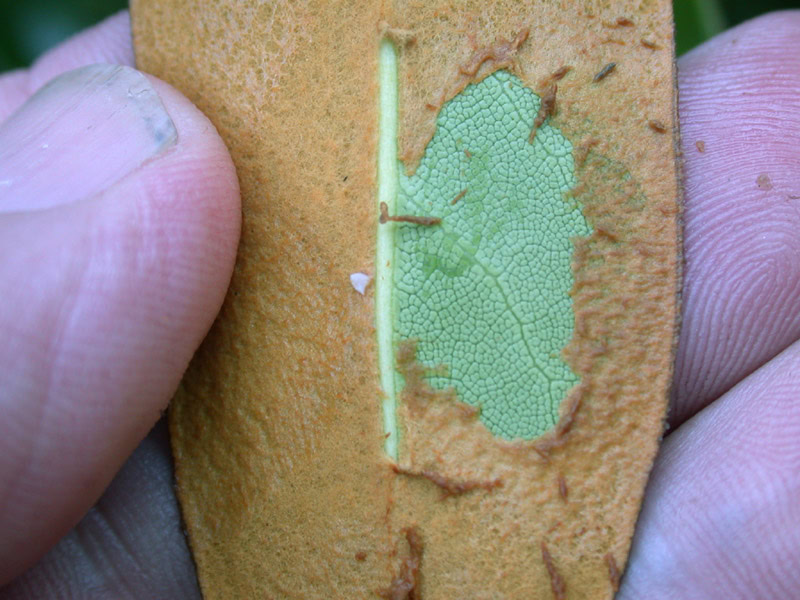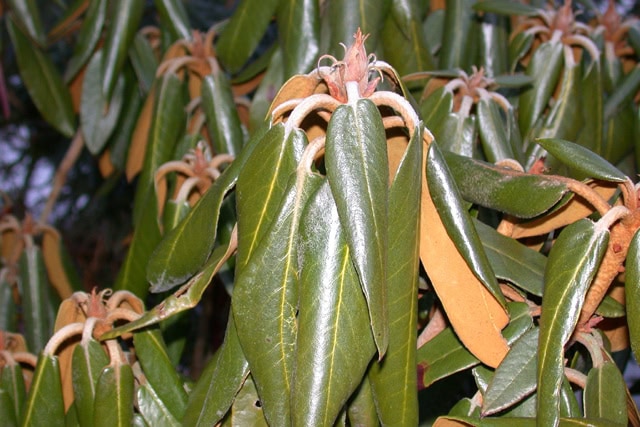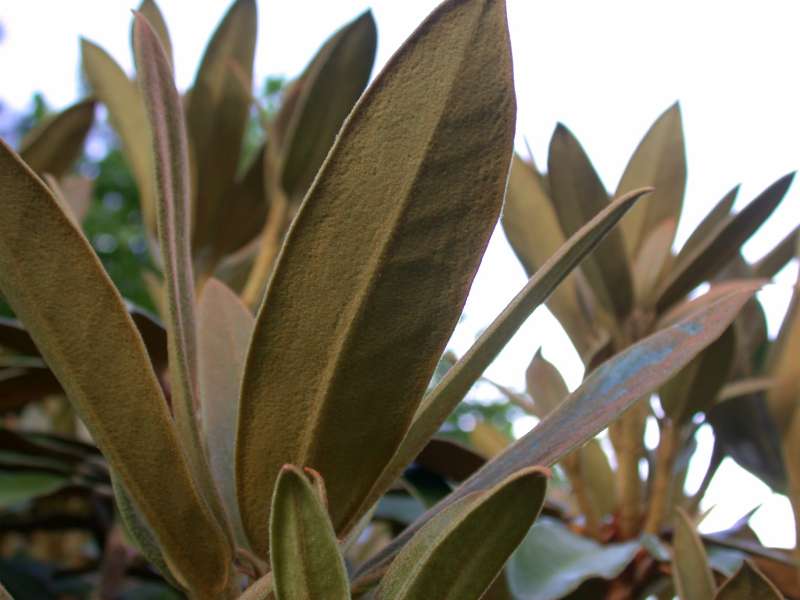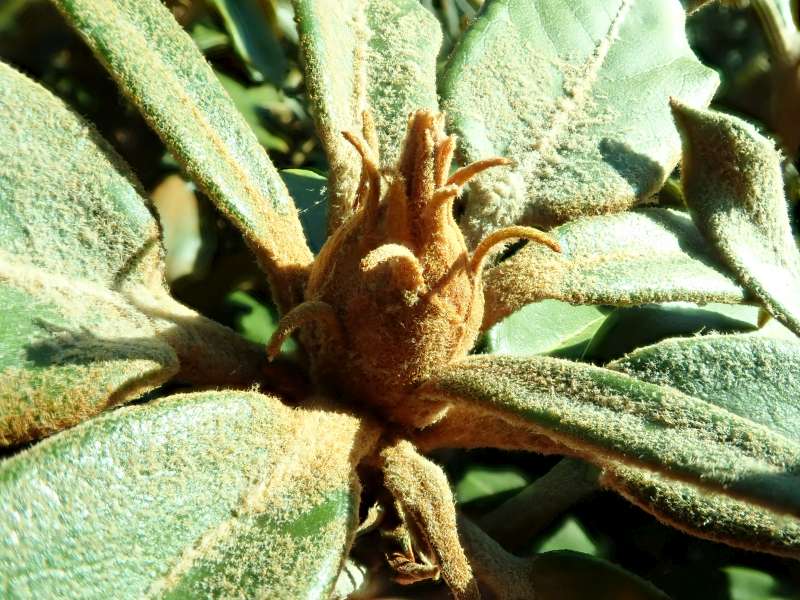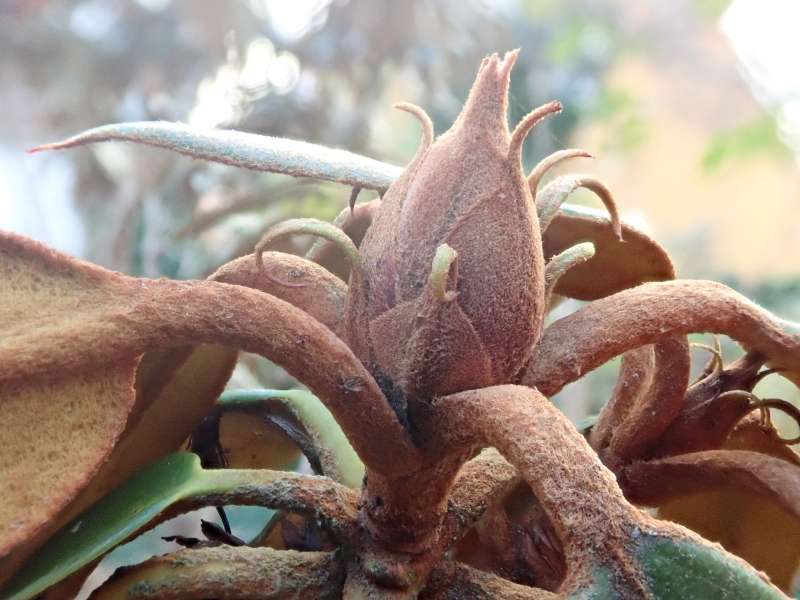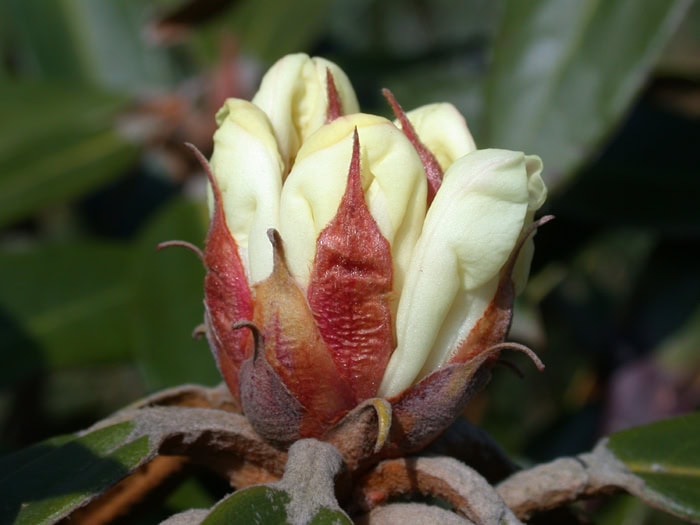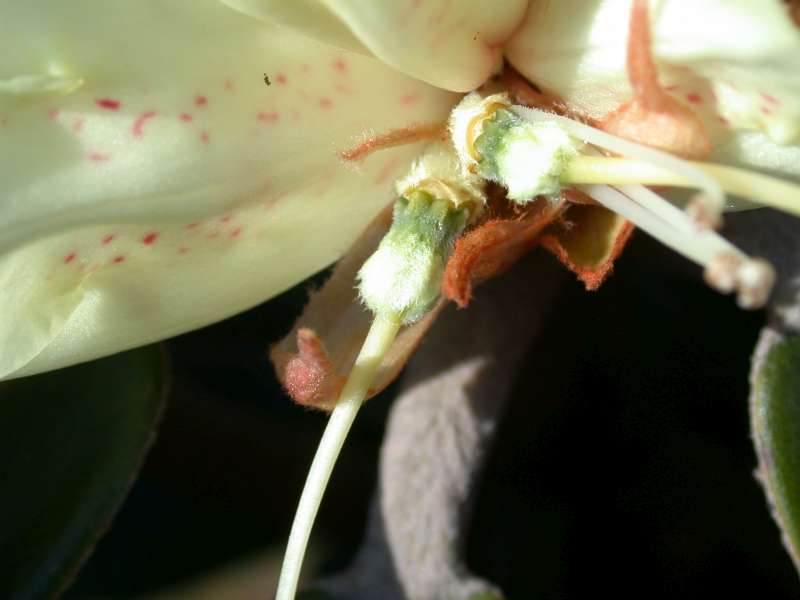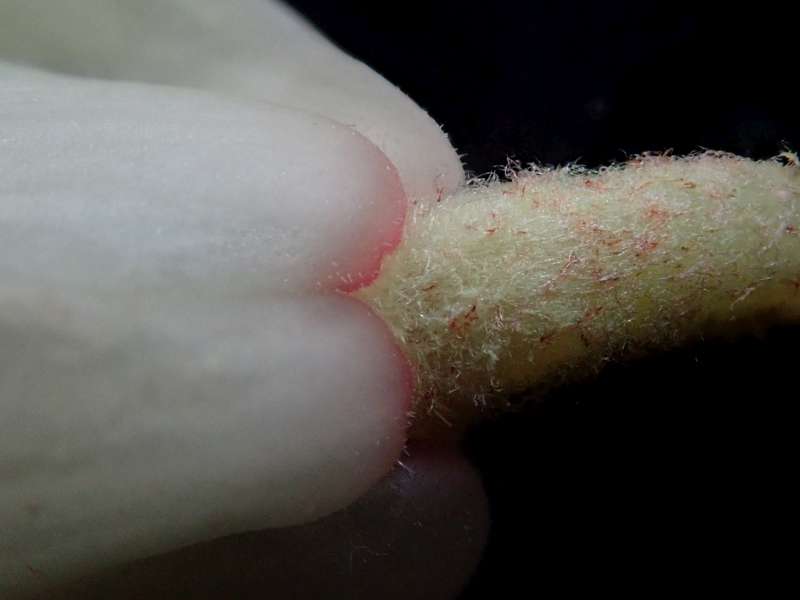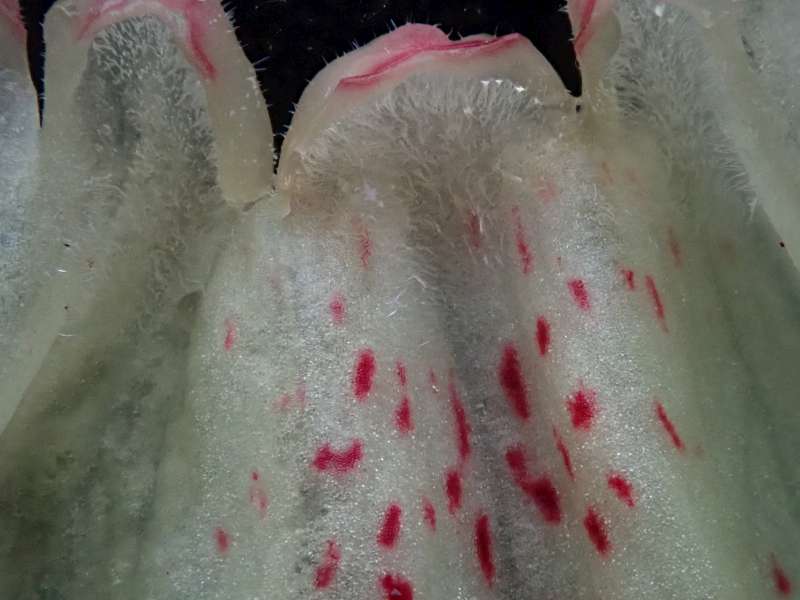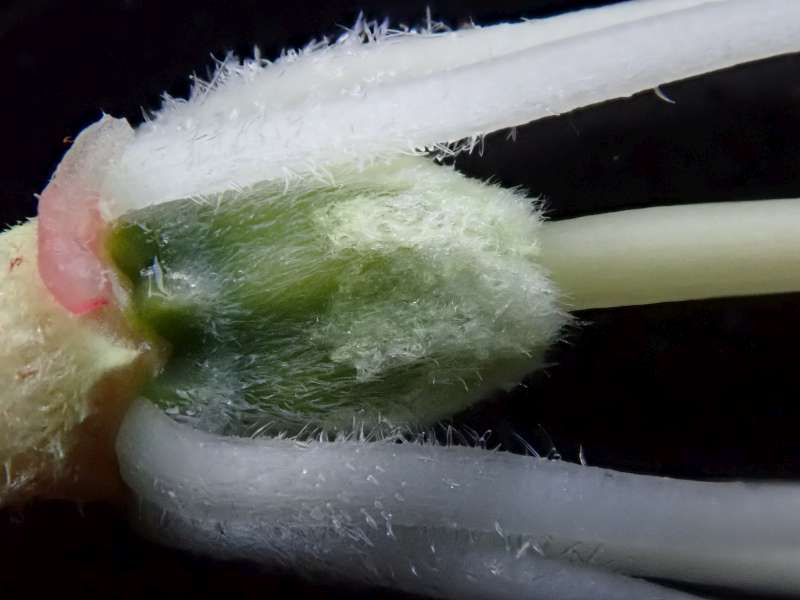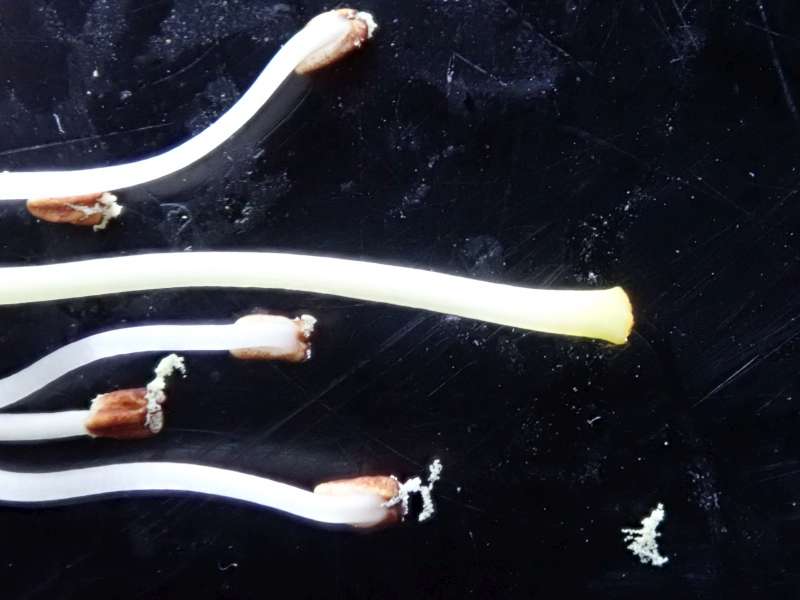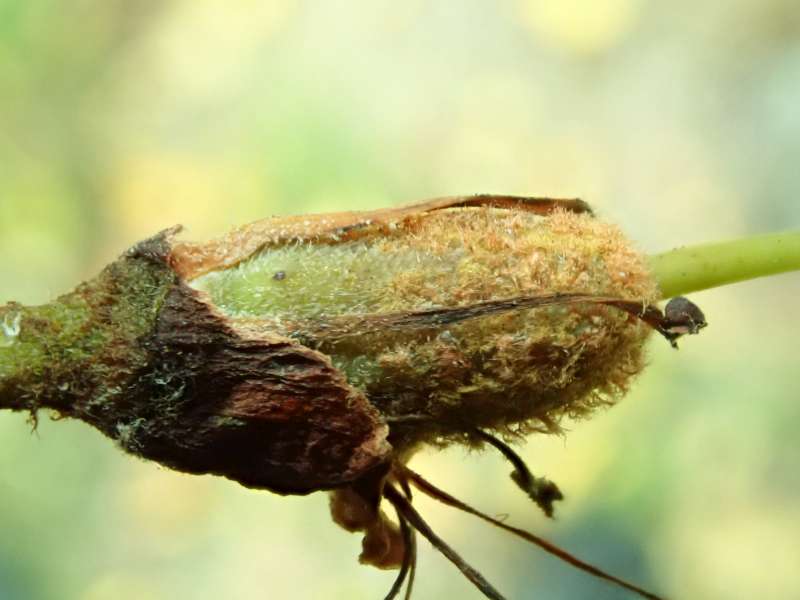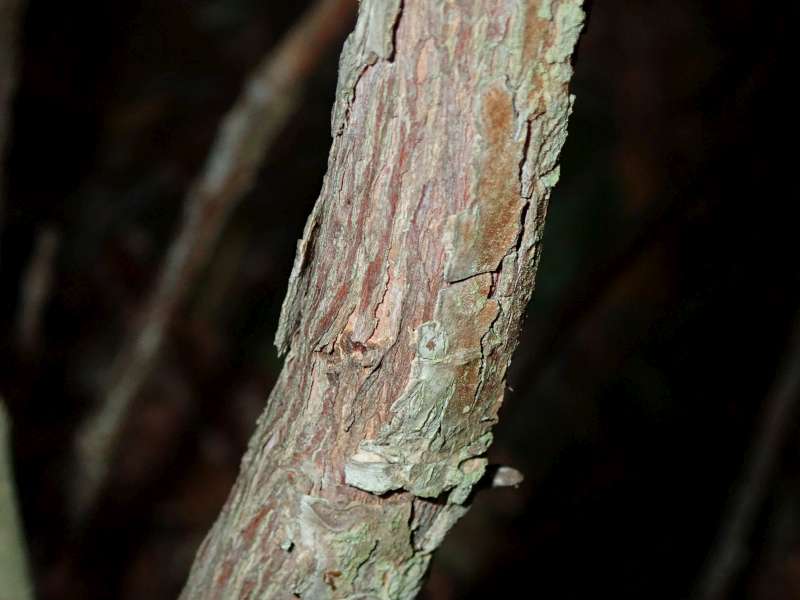Rhododendron luciferum
Billeder af Rhododendron luciferum
Beskrivelse
R. luciferum (Lanata). Beskrivelsen af arten som den står i Davidian (II, 1989) og Chamberlin (Notes of RBGE, 1981) stemmer ikke helt, idet der står (sammenlagt) at arten har et meget tykt åbent rødbrunt uldent indument. Claus Staune har gjort mig opmærksom på at det nok er en fejlfortolkning i beskrivelsen af arten i nyere bøger, idet dette ikke stemmer med herbariearkene. Farverne “fawn” og “tawny” kan fortolkes enten som gulbrun og grønbrun eller rødbrun. Men hvorfor er “filtet brunt” blevet til “meget tykt åbent”, “rufous / rødbrunt”.
Et rigtigt godt kendetegn på arter er det som tibetanerne beskrev om arten at de brugte indumentet herfra som lampevæge. Jeg opdagede at det er muligt at rulle indumentet af i store flager når det er fugtigt og forme det til en væge. At fjerne indumentet fra midterribben på undersiden kan gøres på mange arter, men ikke på pladen. Bladet bliver derefter nøgen dvs. grøn på undersiden, som viser at indumentet består af et lag. R. luciferum, som blev dyrket i Hobbies have under navnet R. bureavii, men blev af mange kaldt for R. puluninii or R. tsariense var. magnum.
Faktisk det med at rulle indumentet af kan også let gøres på den mindre “art” R. poluninii Davidian, som har mindre og mere ovale blade (med mere grøn-orange-brunt indument) end R. luciferum‘s spidse og større blade. K. Cox solgte en plante mærket R. luciferum, men denne ligner ikke herbariearkene og har to lag indument og kirtler ligesom R. circinnatum, der hører til Taliensa (Lanata har ikke kirtlelhår).
Herbarieark
Herbarieark af arten fra RBGE som Claus Staune har skaffet fortæller at indumentet er filtet og brunt, gulbrunt-grønbrunt (#1762, #3793, og #3620) som “hobbiense”.
Andre herbarieark med navnet R. luciferum er omklassificeret til R. lanatoides da de har slankere og tilspidsede blade (#15006,#13746) og andre har måske mere brunt indumernt (#6652) og med mere butte bladspidser (#3976). Hvis man er “lumber” er der kun en art i Lanata da der ikke er afgrænsninger mellem nogle af arterne i denne section.
Hans Eiberg
Claus Staune har nu 29 sept. gjort mig opmærksom på at der findes et billede af planten fra Lela (L&S.1557) taget af Sherrif. Så R. luciferum vokser vildt her.
Old description
R. luciferum (Lanata). The old description of R. luciferum don’t fit in some part. This species don’t have a very thick woolen (rufous) red-brown indumentum, but a compact (felted) green-brown indumentum. In Tibet the people used the indumentum as a lamp wick in old days. Indumentum can be rolled of the leaf in big parts (when it is wet) and formed to a wick (best method to identify the species). No glands are found on the leaf and ovary (not a Taliensa).
Wrong description of the indument of R. luciferum in Flora of China: Rhododendron luciferum may be a distinct species, differing in the shape of the leaves and their loose, very thick, rufous indumentum. Moreover, the taxon has a more easterly distribution. This is now changed to: However, Hans Eiberg (August 2010) noted that the indumentum of Rhododendron luciferum is not rufous. According to Eiberg, “this species does not have a very thick woolen (rufous) red-brown indumentum, but a compact(felted)green-brown indumentum. The indumentum can be rolled off the leaf in big parts (when it is wet) and formed into a wick (best method to identify the species). No glands are found on the leaf and ovary (not a Taliensa).
Hans Eiberg
R. luciferum. Samlemappen: login
Udbredelse
R. luciferum udbredelseskort i Tibet: Claus Staune
R. luciferum udbredelseskort i Tibet, detaljeret: Claus Staune
Kort over R. luciferum‘s indsamlingsområde, let bearbejdet udfra kortene i Fletchers bog, som er det, indtil nu, mest overskuelige kort over området jeg er bekendt med. De røde prikker illustrerer den omtrentlige lokation for indsamling som jeg har været i stand til at kunne registrerer ud fra kildematrialet. LS&E-indsamlingerne af luciferum (syn. lanatoides) er fortsætligt ikke inkluderet. Farven på R. luciferum indument efter RHS farvekort:
1. års blade. 163B, UCL-navn: “Strong Orangish Yellow”.
2. års blade. 163A, UCL-navn: “Deep Orangish Yellow”.
3. års blade. 164 A UCL-navn: “Brownish Orange”.
Da brun er det almindelige navn for en mørk orange, og oliven er en mørk gul; der virker grønlig, vil jeg foreslå at farven kaldes gul-brun
UCL-navne herfra:
https://www.azaleas.org/index.pl/rhsmacfan4.html og her: http://www.anthus.com/COLORS/NBS.html.
Claus Staune
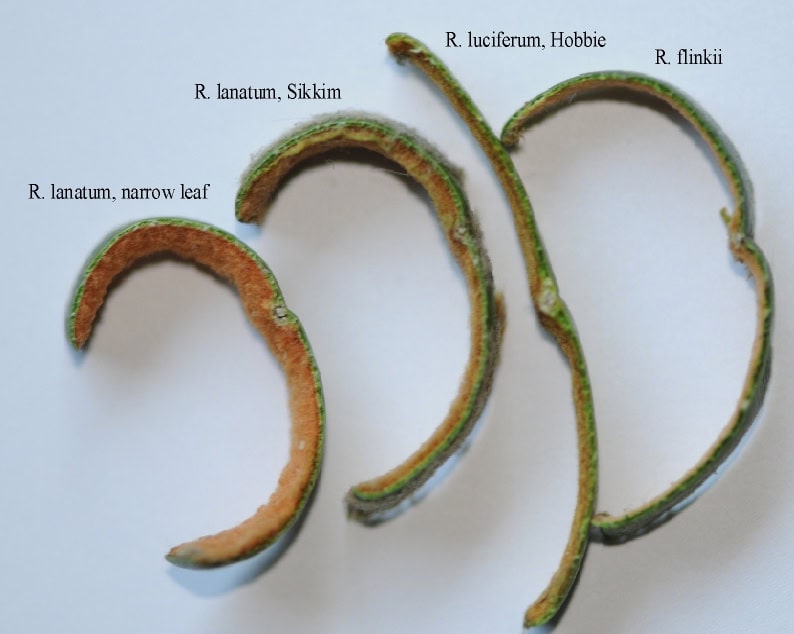
Flora of China, circinnatum
Flora of China, lanatum var. luciferum
D. Genbank
R. luciferum Herbarieark fra NHM (copyright, Natural History Museum), 844KB
RBGE Herbarium; R. luciferum (only txt)
Hobbie
R. luciferum Cowan i Notes RBGE. Vol.19 (1937) p. 228-229: Claus Staune
R. luciferum Cowan i Notes RBGE. vol.21 (1953)p.145-46: Claus Staune
Det har været foreslået at hvis “Hobbiense” ikke var luciferum at det så kunne være fra de uidentificerede LS&T. 3589 el. 3619, men fieldnotes og herbarie materiale tyder på at det ikke er det. Hobbie nævner i sin artikel i The Rhododendron and Camellia Year Book 1959 at han har fået frø fra L&S.-1938-ekspeditionen. Men L&S.-ekspeditionen var jo i 1936, mens den i 1938 var LS&T. Jeg vil dog tro at T´et er en forglemmelse fra Hobbie´s side, og at det rent faktisk er fra 1938-ekspeditionen han har fået frø.
Hobbie nævner sammesteds at han også fik frø fra Hu´s ekspedition i 1938 til nord-vest Yunnan. Men det er vel er ikke sandsynligt at luciferum (el. “Hobbiense”) vokser her, og den er da heller ikke nævnt i listen over indsamlingsnumre herfra (Heller ikke i den mest fyldestgørende liste fra “Yearbook of The Rhododendron Association” 1939, selvom der dog nævnes uspecificerede arter fra Taliensia s.). Så hvis Hobbie har fået frø fra LS&T.-ekspeditionen i 1938 (og “Hobbiense” ikke er fra 3619 el. 3589) er det så ikke sandsynligt at “hobbiense” er fra 3620,6549 el. 6652, når nu den originale beskrivelse og herbarie-materialet ser ud til at passe?
Claus Staune
Carl Adam Lehmann lavede frø af R. luciferum ved selvbestøvning. Udaf en enkelt frøportion overlevede 2 planter, hvilket må siges ikke at være unormalt for en selvbestøvning. Interessant er jo at frøplanterne lignede moderen. R. luciferum frøplante RF-252/2005 Erik Willumsen
R. luciferum er brugt som krydsningspartner med R. yakushimanum og har produceret planter med gulligt tykt indument med næsten hvide blomster, men også med Flava der har givet kompakte planter med blanke blade, tykt indument og gullige blomster. Et godt kryds!

